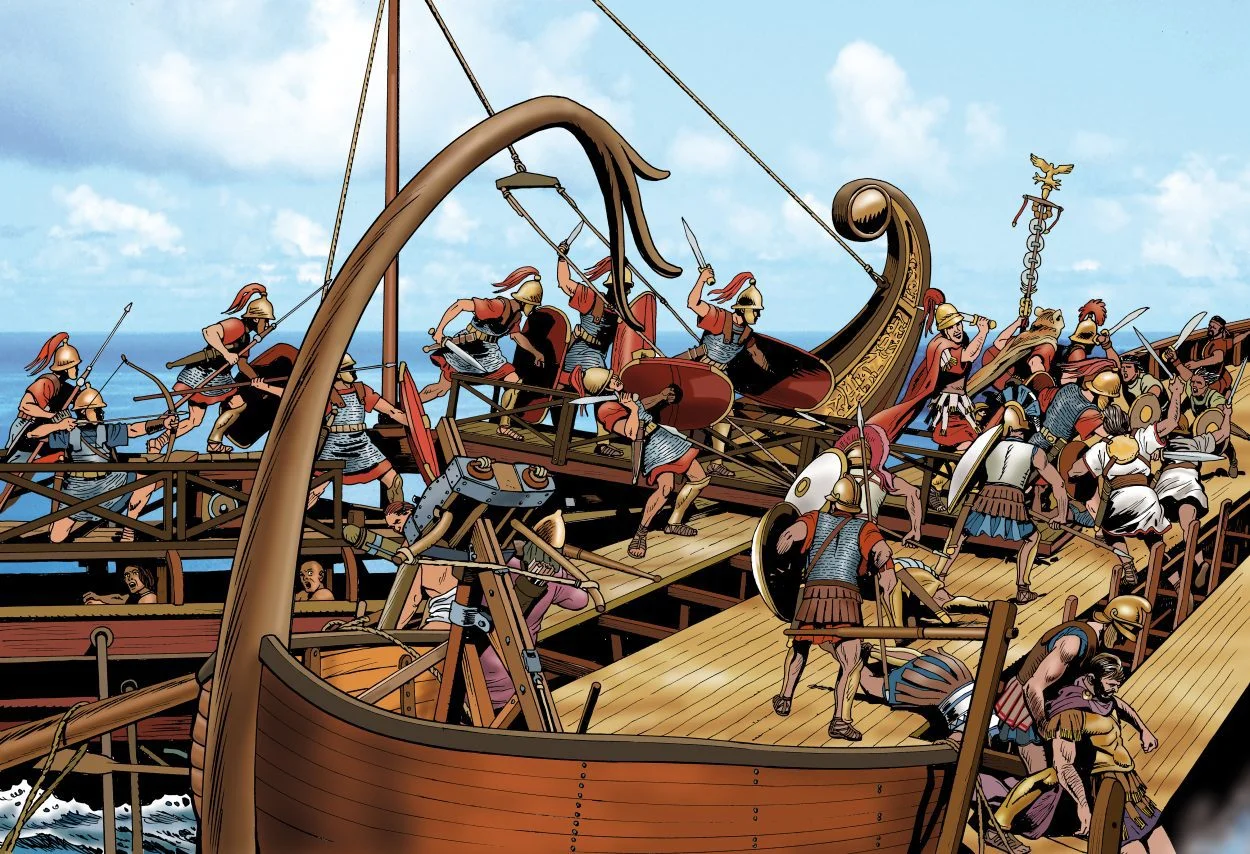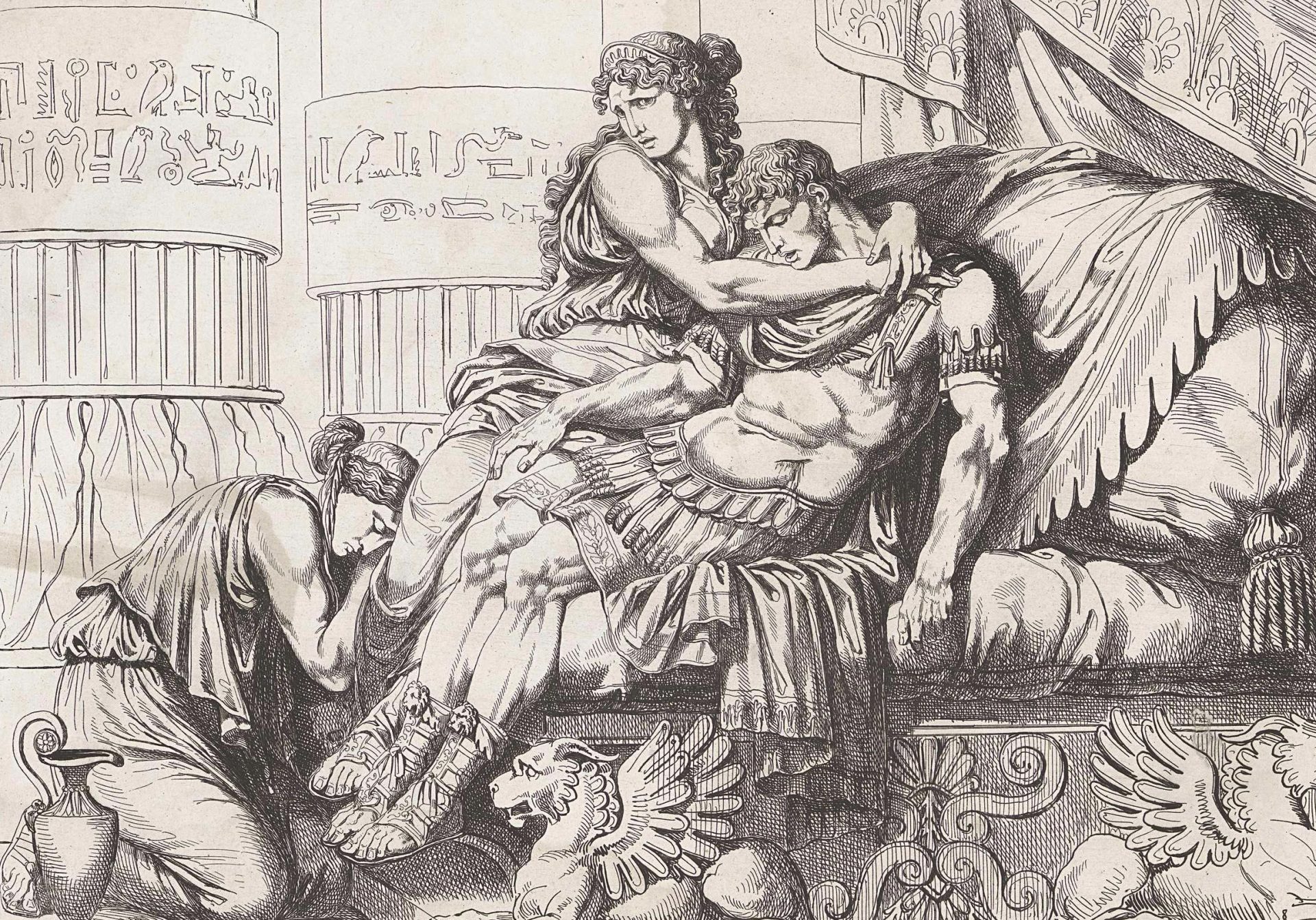The Battle of Actium marks the closing chapter of a series of civil wars and the decisive battle between the forces of Octavian against Mark Anthony and Cleopatra VII Philopator.
Long before the outbreak of hostilities, Octavian, Mark Antony and Marcus Lepidus ruled the Republic in an alliance called the Second Triumvirate, officially known as tresviri rei publicae constituendae (meaning: The triumvirate for organising the republic).
The alliance was a military dictatorship, with Rome’s territories divided between each of the triumvirs, who’s relationship became fractured over time through internal jealousies and the ambitions of each man.
Relations with Lepidus collapsed when Octavian accused him of usurping power, resulting in Lepidus being placed in exile in Circeii and stripped of all his offices (except that of Pontifex Maximus).
Despite Anthony being married to Octavia (Octavian’s sister), he chose to live in Alexandria with Cleopatra, siring multiple children with her and openly circumventing Rome’s policies, leading many Senators to question whether Anthony was attempting to become the unchecked ruler of Egypt and the other eastern kingdoms.
Anthony went as far as to mint coins that commemorated his victories in Armenia and read a declaration known as the Donations of Alexandria, in which he granted territories to Cleopatra’s children.
They then elevated Caesarian (the eldest son of Cleopatra) to the title of “King of Kings” and named him Julius Caesar’s true son and heir, effectively installing Caesarian as a direct contender to Octavian, who was Julius Caesar’s grandnephew and adopted son.
In response, Octavian ran a propaganda war, asserting that Anthony was attempting to establish a monarchy over the Roman Empire on behalf of Caesarion and was effectively acting as the agent of Cleopatra.
In 32 BC, Octavian illegally obtained Antony’s will and used it to depose Anthony from his consulship, depriving him of any legal authority and issued a proclamation of war against Cleopatra (and indirectly Anthony).

Octavian’s main fleet, comprising of 400 galleys engaged Anthony’s 250 galleys in 31 BC outside the Gulf of Actium (although sources on both forces vary). Antony originally had a much larger force of around 500 ships, but due to desertion and disease was limited in naval vessels that could be readied for battle.
His ships were mainly the standard Roman warship, quinqueremes with smaller quadriremes, heavier and wider than Octavian’s liburnian galleys, making them ideal weapon platforms, however, due to their larger size they were less manoeuvrable.
After heavy fighting over several hours, Cleopatra and her ships retreated to the open sea without engaging. Anthony, believing all was lost, followed the fleeing squadron, causing his forces to break formations and withdraw.
Cleopatra and Antony retreated to Egypt to recuperate and prepare for an assault by Octavian, which came during the Battle of Alexandria in 30 BC. Both sides suffered many casualties, ultimately resulting in the fall of Alexandria, leaving Anthony and Cleopatra no other refuge to escape.
Believing false rumours propagated by Cleopatra that she had taken her own life, Anthony stabbed himself out of grief through the stomach with a sword. Cleopatra was allowed to conduct Antony’s burial rites after she was captured by Octavian, who occupied the royal palace and took her children hostage.
The Roman historian Titus Livius claims Cleopatra told Octavian “I will not be led in a triumph,” but realising that Octavian still planned to parade her through Rome, she committed suicide in 30 BC. Octavian had Caesarion and Mark Antony’s eldest son, Antyllus, executed, but showed mercy to the rest of Antony’s children who were raised by Octavia as Roman citizens.
In the following years, Octavian, who was known as Augustus after 27 BC, managed to accumulate in his person all administrative, political, and military offices, marking the end of the Republic and the birth of the Roman Empire.
Header Image Credit : Rijksmuseum – CC0 1.0





